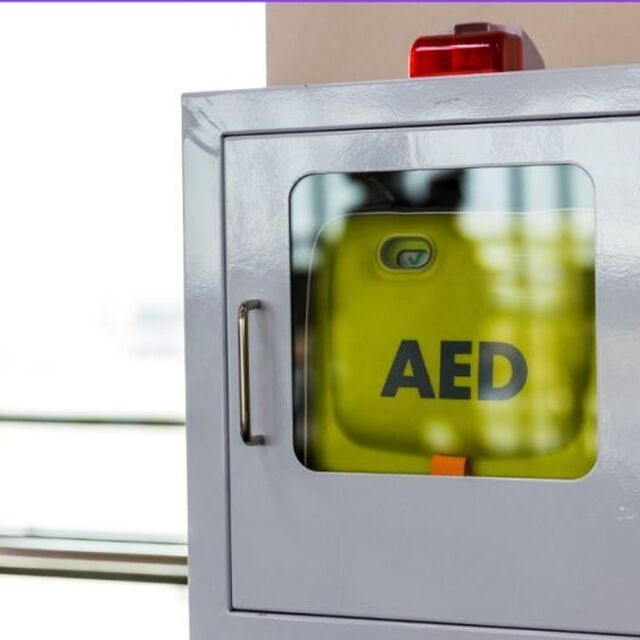The Automated External Defibrillators (Public Access) Act 2022 (Act) is expected to come into operation on 1 January 2025. It is the governing legislation for the installation, maintenance and registration of Automated External Defibrillators (AEDs) in South Australia.
Key Responsibilities for Landowners
Under the Act, landowners in both the public and private sectors may be responsible for the installation, maintenance and accessibility of AEDs for emergency use. This includes ensuring that AEDs are functional and managed effectively.
Compliance Timeline
Whilst the Act takes effect on 1 January 2025, landowners have until 1 January 2026 to comply with its provisions. The exception is where the landowner is the Crown or its agencies, which must comply by 1 January 2025.
Upcoming Amendments and Proposed Regulations
It is important to note that the Act is subject to the following updates:
- Automated External Defibrillators (Public Access) (Miscellaneous) Amendment Bill 2024 (Amending Bill) – the amendments will take effect on 1 January 2025 and are to be read alongside the existing Act; and
- Automated External Defibrillators (Public Access) Regulations 2024 (Proposed Regulations) – Having recently concluded the public consultation period, the regulations are yet to be passed by the South Australian Parliament and should be read in conjunction with the Act as amended by the Amending Bill.
Application of the Act
The Act applies to certain types of buildings and facilities:
1. Designated Building or Facility (Section 4):
- Public buildings;
- Prescribed sporting facilities;
- Schools and educational facilities;
- Retirement villages and ages care facilities;
- Caravan and residential parks occupying more than 12 persons;
- Casinos and gambling venues;
- Theatres and cultural performances venues;
- Other specified buildings or facilities as defined by the Regulations.
2. Prescribed Building (Section 5):
A Prescribed Building includes:
- New commercial buildings (from 1 January 2025) with over 600 square metres of floor area; or
- Converted buildings for commercial use.
3. Relevant Designated Building or Facility or Prescribed Building (Section 7):
This applies to a Designated Building or Facility or Prescribed Building that is on land used for commercial purposes and has a publicly accessible floor area of more than 1,200 square metres.
Exemptions to the Act
The amendments to the Act include certain building and facilities to which the Act does not apply:
- Hospitals or medical facilities that comply with the requirements of the Regulations;
- Correctional facilities;
- Licensed children’s residential facilities;
- Buildings or facilities (other than a Designated Building or Facility) where the entire building or facility is not accessible to the public.
Obligations of landowners
Landowners captured by the Act must:
- comply with the AED installation requirements;
- conduct maintenance and testing annually;
- install signs indicating the presence of an AED – the signs must be placed near the AED or at the entrance of the building;
- report the AED to the register, including details such as location, public accessibility times and any other information prescribed by the regulations; and
- in the case of a Relevant Designated Building of Facility or Prescribed Building, ensure that an AED installed for every 1,200 square metres of floor area (or part thereof).
Non-compliance
Failure to comply may result in penalties up to $20,000 and harsher consequences for intentional destruction of an AED, including up to 1 year imprisonment.
Impact on Commercial Landowners
The Act assigns the responsibility for installing and maintaining AEDs to landowners, making it their responsibility to ensure compliance with the legislation. Under the current form of the Act, tenants and occupants are not required to install or manage AEDs within their leased or licensed premises. Consequently, commercial landlords need to carefully assess how the Act will affect their tenanted properties.
For commercial landlords captured by the Act, it may be prudent to pass on the costs associated with installing and maintaining AEDs to their tenants as outgoings, provided that the terms of the commercial lease allow for such cost recovery and the landlord has complied with all statutory requirements for the recovery of outgoings. Commercial leases should incorporate provisions that address the obligations under the Act, including:
- The landlord’s right of access to the premises for AED compliance; and
- The tenant’s responsibility to report any incidents involving the use, damage, or theft of an AED.
By including these provisions, landlords can ensure they meet the legislative requirements of the Act without bearing the entire financial burden themselves. Moreover, landlords should be mindful of how this regime might impact their leasing arrangements and negotiations, especially when it comes to disclosing AED-related obligations in agreements to lease and disclosure statements.
How can we help?
If you are a landowner concerned with your potential obligations under the Automated External Defibrillators (Public Access) Act 2022, our experienced Property team can assist you. For further information, you can contact me directly, or send your enquiries to [email protected], or call us on 8414 3400.
